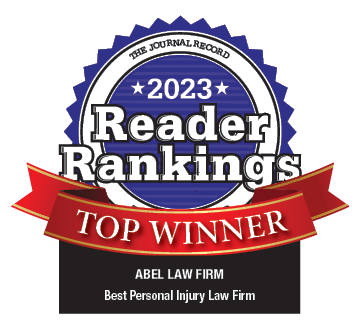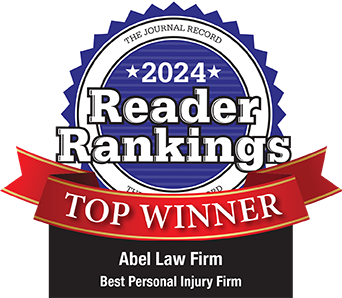Don’t look to the dictionary for a definition of ‘misuse’ as it is used in Oklahoma manufacturers’ products liability cases. The term itself is often misused to convince judges and juries that any negligent use of a product is abnormal. Our courts have recognized a person can even make a stupid mistake without actually misusing the product. As long as the negligence is not the sole cause of the injury, it will not bar recovery. (“If some act of the plaintiff caused the injury, rather than the defective product itself, causation is missing …” Kirkland v. General Motors Corp., 1974 OK 52, 521 P.2d 1353, 1366). The key is foreseeability: as long as the use could be reasonably foreseen by the manufacturer, it is not misuse. Fields v. Volkswagen of America, Inc., 1976 OK 106, 555 P.2d 48, 56-57.
Alcohol Use
Kirkland defined ‘abnormal use’ — “If the plaintiff is using the product for some purpose for which it was not intended and is consequently injured, he should not recover.” Kirkland, 521 P.2d at 1366. When the plaintiff in Kirkland claimed a vehicle seat was defective because it collapsed, the court was instead convinced the driver’s use of ‘vodka and tonic’ was an abnormal use or misuse of the automobile. Id. at 1367.
In contrast, in Fields, 555 P.2d at 56, the court observed, “It is certainly foreseeable by a car manufacturer a person might drive a car over the speed limit or after drinking; but unless this excessive speed or drinking caused the accident, these factors do not bar recovery by the plaintiff even though they may have ‘contributed’ to the accident.” Id. at 57. “By this we do not mean to say that drunkenness could never be misuse of a product, but the situation does not arise in the peculiar facts and circumstances of this case.” Id. “A distinction must be made between use for an abnormal purpose and use for a proper purpose but in a careless manner (contributory negligence).” Id. at 56.
Alcohol consumption was totally irrelevant to the issue of whether a riding mower was crashworthy in Black v. M & W Gear Co., 269 F.3d 1220 (10th Cir. 2001). Drinking might have constituted contributory negligence when the driver went off a steep embankment, but it was not misuse of the mower. On whether the plaintiff’s actions were the sole cause of the accident (the only question on appeal), the alcohol use could not be used to rebut the theory that roll-over protection would have prevented the injuries. The plaintiff was not claiming a defect caused the accident – only that it caused the injuries.
Failure to Read or Follow Directions
In Basford v. Gray Manufacturing Co., Inc., 2000 OK CIV APP 106, 11 P.3d 1281, 1283, the manufacturer of a truck lift claimed “… the cause of this incident and of any injury to Basford was his blatant disregard of the warnings to use the lift only with jack stands in place. [However, there was] information from which reasonable people might conclude that the method of using the lift, chosen by Basford and his co-workers, was an acceptable and foreseeable method for accomplishing their task.” The question of foreseeability was for the jury.
Misuse did not apply to circumstances in which bolts were replaced backwards during maintenance of a forklift in Stewart v. Scott-Kitz Miller Co., 1981 OK CIV APP 3, 626 P.2d 329. “If perchance [maintenance people] were negligent, the injury might nonetheless be found to have resulted not from a misuse of the product, but from a foreseeably faulty repair ultimately traceable, causally, to a design defect.” Id. at 331.
Jury Instructions on Misuse
As stated in Smith v. U.S. Gypsum Co., 1980 OK 33, 612 P.2d 251, the use of a wall adhesive for its intended and sole purpose as an adhesive “…cannot be misuse of the product even if plaintiff used it carelessly … “ Id. at 254 -255. The plaintiff was applying the adhesive with a trowel, producing flammable vapors that were ignited by a fan he was using to ventilate the area. Although the product was being used for its normal purpose, the instruction on misuse was properly given to the jury.
In Treadway v. Uniroyal Tire Co., 1988 OK 37, 766 P.2d 938, the plaintiff claimed a tire bead was defective, resulting in its exploding while the tire was being inflated on a wheel. The plaintiff failed to follow instructions to mount the tire on a tire machine. “The [plaintiff’s] expert stated that the [plaintiff] could have been injured even if he had left the tire on the mounting machine. The jury chose to believe the [plaintiff]. The issue is causation, and causation was correctly instructed upon.” Id. “Here, Treadway was mounting the tire, obviously a use for a proper purpose, but purportedly in a careless manner inasmuch as he did not follow the safety instructions and warnings of Uniroyal. In addition, Treadway’s conduct was reasonably foreseeable by Uniroyal. Treadway’s conduct constituted at most contributory negligence and as such cannot be considered as a complete defense in a manufacturers’ products liability case unless this conduct was the sole cause of the accident.” Id. at 942. “Consequently, the determinative issue is what caused the tire to explode.
Should the Jury Decide for Uniroyal?
Did the tire explode because Uniroyal manufactured a defective tire or did the tire explode solely because of the manner in which Treadway mounted the tire in violation of Uniroyal’s written instructions…” Id. at 943 (concurring opinion). “The only jury instruction Uniroyal was entitled to, which the trial court failed to give, was a charging instruction which would inform the jury that if they found the sole cause of the accident was Treadway’s negligent use of the product, i.e., failure to properly follow Uniroyal’s mounting instructions, then they should render a verdict for Uniroyal.” Id.
Contributory Negligence
On the question of misuse in McMurray v. Deere and Co., Inc., 858 F.2d 1436 (10th Cir. 1988), the court stated, “Here, decedent was using and attempting to use his tractor for a proper purpose — plowing; any carelessness in his attempts to bypass start the tractor was only contributory negligence — not a defense here.” Id. at 1443. “This is entirely different from a situation where a farmer is using his tractor for an abnormal purpose, for example attempting to demolish a building. … [F]armers have long been bypass starting their tractors. We also note that Deere was aware of this practice …” Id. In addition, failure to follow instructions and warnings was not misuse. Id.
The court explained how the defenses are related: “The evidence of alleged misuse was relevant in the defendant’s attempt to develop the defense that the decedent assumed the risk of the defect claimed, which we have held the defendant failed to do. It was also relevant as to whether the tractor was a dangerous product in light of the warnings and instructions given.” Id. The court cautioned that on remand, if the jury heard evidence of the decedent’s negligence, it should instruct the jury that contributory negligence is not a bar to recovery. Id. at 1444. Now OUJI-CIV 2d 12.9 includes that concept: “… If Plaintiff was using the Product in a way that was foreseeable or should have been anticipated by Defendant, it is not misuse even if Plaintiff was negligent in using it.”
Submitting Disputed Facts to The Jury
Although a woman denied riding in her vehicle in a reclined position, the defendant alleged misuse in violation of a warning in the owner’s manual against such use of the seat. Cummings v. General Motors Corp., 365 F.3d 944, 951 (10th Cir. 2004) [abrogated on other grounds, 546 U.S. 394]. The trial court did not err in submitting the disputed facts to the jury. Id. at 952.
It was reversible error to submit misuse to the jury when a man used the defendant’s lanyard and hook as a safety line when evidence showed it was designed for that purpose, although the defendant claimed it was not to be used on safety belts. Farrell v. Klein Tools, Inc., 866 F.2d 1294, 1298 (10th Cir. 1989).
Affirmative Defense
Wearing flammable underwear while welding (without wearing leather outer clothing) was not misuse in Spencer v. Nelson Sales Co. Inc., 1980 OK CIV APP 58, 620 P.2d 477. The “…use was not abnormal and, if it were, the burden rests upon the defendant to prove the defense and not on plaintiff to disprove it. If, as defendant says, foreseeability (by manufacturer or supplier of potential abnormal use) is a test for determining the supplier’s liability, then to succeed with its defense the defendant (not plaintiff) would have to prove the abnormal use was not foreseeable. … This instruction misguided the jury and should not have been given. There is no evidence that plaintiff was using subject clothing in any manner or for any purpose other than as an undergarment to keep himself warm.” Id. at 482.
Sophisticated Users
The question of whether the product is ‘unreasonably dangerous’ might also depend on whether the jury determines the user is knowledgeable or a ‘sophisticated user’. Basford, 11 P.3d at 1284. If the user is a professional, the defendant is entitled to assume he or she will heed warnings and is not required to foresee that professionals will “… fail to read its warnings, and then use the [product] in a manner that the manufacturer’s instructions expressly warned against.” Hutchins v. Silicone Specialties Inc., 1993 OK 70, 881 P.2d 64, 67.
Intentional Misuse
Some behavior goes beyond negligence. Summary judgment was appropriate when a person intentionally extracted and abused a drug sold in an inhaler. Prince v. B.F. Ascher Co., Inc., 2004 OK CIV APP 39, 90 P.3d 1020, 1027. “… [T]he product became dangerous only as a result of [the decedent’s] after-purchase modifications thereto and knowing, aberrant misuse.” Id. There may also be no duty to warn suppliers of a product of potential criminal misuse of a product. Gaines-Tabb v. ICI Explosives, USA, Inc., 160 F.3d 613, 625 (10th Cir. 1998) (fertilizer used as a bomb).
Urban legends
There are many stories making their way around the internet about people misusing products and then supposedly winning lawsuits against the manufacturers (for example, the legend of the man who left the driver’s seat of his Winnebago to make a cup of coffee or the woman who microwaved her poodle to dry him after his bath). Most are just that – urban legends or lies to convince people the legal system needs reform. In the real world, Oklahoma law would not allow such outrageous results.
–Lynn Brusin Mares


